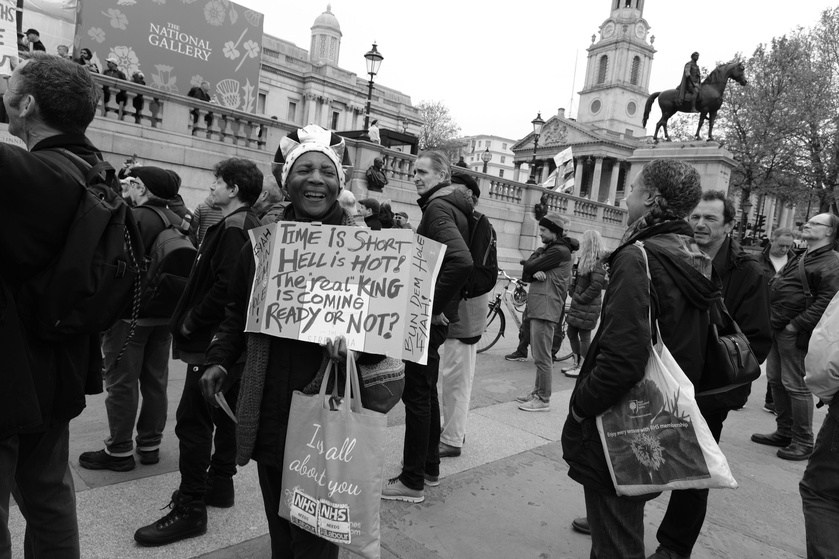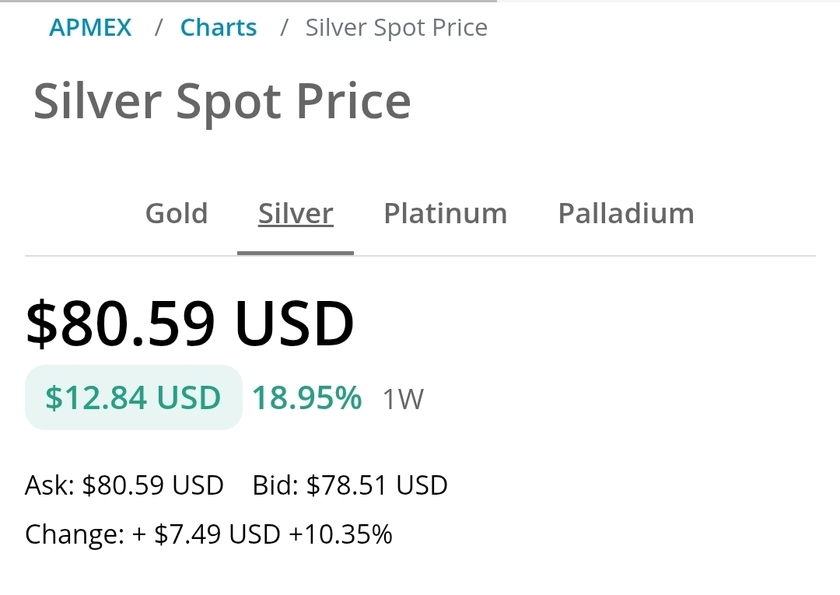I have just finished reading this rather excellent summary of all the iniquities of council tax in England. If you are having to go out to work in order to pay the pension of someone else who has no lawful claim on you, and this is done through fraud and intimidation, then you’re a slave. A part-time slave is still a slave. Forced labour is never acceptable in a free society, nor are charges for enjoying God-given rights, yet that is exactly where are. Drawing on this document, as well as my more general reading, here is my summary of how we came to be “legally enslaved”.
Godless (in)justice
At the core of the process is violation of the golden rule, which makes it a spiritual failure. This then results in the master/servant relationship of the public and the government being inverted. The divinity of the individual is denied as all kinds of fraud are perpetrated on the common man. The institutionalised spiritual powers are captured to the government-banking axis, so de facto worship Mammon. Temporal authority is elevated above all else, and people fear judgment of their bosses and peers, not in the eternal realm.
Morality of necromancy
In order to assuage the conscience of the minions who operate this system, there is an unspoken creed that adopts the morality of the dead, not the living. People are converted into objects or ideas, so there the only moral code in play is a legalistic one, not a holy one. As long as all the rules of the game of the court are followed to the letter, it doesn’t matter (to operatives of the system) whether we are doing a wicked deed, when seen through the lens of treating others as we would wish to be treated ourselves. The living (Master, Baron) are given the titles of the dead (Mister, Mr, Mrs, Miss, Ms, Lord, Lady), converting us into mere assets of the legal system.
Administrative inversion of rights
In the world of Roman commercial courts, social normalities are inverted: we are presumed to be childlike illiterate paupers who are so incompetent that we need the guardianship of the court. There is no place for any court involving ordinary men and women where there is an unseen presumption of guilt, yet this is the reality we face in magistrates’ courts today. The most foundational part of our constitution, Magna Carta, has been overturned by the infiltration of administrative law. We are literally being administered as chattel of the state! People naively imagine they are in a venue that respects their humanity, as they cannot conceive of the scale of subversion.
Perversion of language
A parallel language of legalese inverts many common uses (e.g. a civil summons being merely an invitation, a mandate being a request and not an order, enforcement not having actual force of law). “Dog latin” is a meaningless gibberish used to confuse the masses. Grammar and syntax are mangled in order to trick us into acts based on “legal artwork” with no semantic standing. Text is put in boxes, rendering it legally invisible but socially effective, and the “four corner rule” is commonly ignored. Legislation redefines words, so in the case of council tax we have a “pseudodebt” that is not a real sum owed. A Liability Order™ is not a valid court order, and carries no liability for anything.
Evasion of personal accountability
It is common for official communications to come with no actual named man or woman responsible, no signature proving provenance, and a PO Box for return which is a fictional address. We are denied the ability to hold the individual to account for their ultra vires actions that go outside of the lawful remit of their role. They can act anonymously, and have no fear of being confronted in ordinary life for their actions. The administrative edifice presents a solid blank wall, and protects those who support its criminal acts. Corporations cannot speak to a (wo)man; only another (wo)man can.
Swapping of legal and lawful
Functionaries routinely justify their actions as being legal, citing relevant statute legislation. This is a trick: the relevant standard is whether they are lawful, which requires reference to equity, constitutional law, international law, military law, common law, and case law. If you are conducting a subversive infiltration of a free society on behalf of foreign powers, pointing to an abusive rule that you are following is no lawful excuse. The Coronavirus Act 2020 demonstrated this legalised erosion of civil liberties amply — war crimes being committed as health measures. The rule of law is not merely the unthinking application of legislation.
Registration as voluntary enslavement
When we register for anything — a birth, a driver, a marriage — then we are “voluntarily” surrendering our innate rights to another, and in return accepting the benefits or privileges on offer. The state uses threats and extortion tactics to get you to participate in this commercialised reframing of society, but there is no fundamental requirement for you to register a newborn to anyone, nor to surrender your right to travel in your own carriage, or get permission to form a sacred sexual union with another. The whole system is dependent on it being normal to act like a servant, and to treat the state as your master. If enough people revolt, it’s all over.
Confusion via doppelgänger trusts (Your Strawman)
Our birth certificates establish a trust in a name that appears to be us, but is actually granted to a third party; we are merely the beneficiary who is “lost at sea”. Our whole legal system is based on a shell game of persuading the living man to act as the trustee, taking on liabilities he does not owe to anyone, and relinquishing the benefits of being the beneficiary. These trusts are routinely administered by courts without the consent of the beneficiary. All of these trusts should be collapsed as fraud, and the assets retuned to the beneficiary.
Deprecation of equity law
The highest law are the rules of equity, as they trump all other case law, legal maxims, and legislation. The essence of equity is that we are all equal under the law, and that the job of justice is to restore peace and harmony where equity is disturbed. The average person is completely unaware of the rules of equity, and legal arguments based in equity are routinely ignored in lower courts. Hence justice based in equity tends to only be available to the wealthy and well-informed; without equity, an “elite” class of people above the law is balanced with one of “cubicle workers” below it.
Substitution of jurisdiction
As an extension of the points above on necromancy and trusts, it is commonplace for police and courts to act out of their jurisdiction, and to ignore the requirement for consent to act in non-criminal matters. Infractions of policy (offences) are not crimes, since there is no victim or complainant. The invention of “Regina” or “Rex” as the other party is a complete fiction, since they cannot be challenged or examined in court. Administrative courts feign the processes of legitimate civil or criminal courts, but are completely unconstitutional.
Swapping form for substance
Breaches of rules get merged into criminal law, and “fake fines” for breaches of form and not substance appear everywhere. So when you accidentally drive into a bus lane and get a penalty notice, you have crossed a painted marking (form) but caused no delay to anyone (substance). Without evidence of others being held up by your carelessness, there is no wrongdoing or complainant. Over time, the law becomes preoccupied with form, and the underlying substance is abandoned. A parallel reality that is the playground of tyrants emerges.
False doctrine of Parliamentary sovereignty
In the C18th there was a formalisation of the overreach of power by the legislature and executive through the doctrine of “Parliamentary sovereignty”. It ought to have been a limited measure: only legislation passed by Parliament itself is valid law, Parliament governs the executive exclusively, and no Parliament can bind a future one. Instead, it has become an excuse for unaccountable and unconstitutional power grabs, that deny the sovereignty of the people as delegated to the monarch through the coronation oath. Parliamentary sovereignty is repeated as fact and law, but it is merely the opinion of past commentators.
Merger of powers that ought to be separate
Freedom is maintained via a separation of powers, and the resulting checks and balances. In the last century we have seen the de facto merger of the executive with the legislature, and the fusion of the political establishment into a uniparty that sustains its power no matter who is nominally in charge. In the case of council tax, the billing authority, the prosecuting authority, and the enforcement authority are all the same: the council demands money off you, prosecutes you, and also runs its own private court.
Dilution of trial by jury
Jury selection has been notoriously subjected to rigging over the last few decades. However, the rot is deeper. Juries do not have to be unanimous in meting out punishment, which allows for a kind of mob rule by jury. They have lost their power to determine what is a conscionable punishment, that having been taken by the professional judiciary. Most seriously, the annulment of unfair laws has been rejected by the establishment, despite is never being acceptable for a juror to enforce a law that goes against their conscience. Therefore the key check on legislative overreach has been removed. Democracy is not the act of voting or universal suffrage; is the people having the power to restrain the government.
State monopoly on enforcement
The disarming of the general population and the delegation of all enforcement to processionals has unfortunate consequences. Those in power do not fear the people, and the role of enforcers (like debt collection agencies) grows to cover theft from the people. No amount of letter wring and games in court will resolve the matter if the enforcers only answer to corrupt powers who seek money and control, and the police refuse to do their job, taking the side of the robbers. When someone comes to take your property under a legalistic pretext, they need to have a genuine concern that those being predated might fight back. There is no peace without projectile power.
No militia or military skin in the game
When things go wrong and tyranny appears, then we need to fight back. Ideally this is done through civic institutions, and when that fails, the only option is military. Yet the population has become disengaged from military action, and it has become a niche activity done by a standing army. There is no experience of weapons of war, and no cultural memory of the discipline of being in a fighting force. People have come to expect others, largely drawn from lower social classes, will engage in geographically remote acts of personal sacrifice in the name of their preferred ideology. The average person does not fear being drafted to deal with the consequences of their vote. The refusal to physically fight back against tyrants in the short run ensures genocide or civil war in the long run.
Ignorance of birthright by indoctrination of the young
We are all entitled to our inheritance of customs and laws, and this is explicitly stated in legislation like the Act of Settlement 1700. The young are taught nothing about this, and indeed are given a false understanding of our system of government that puts them in a place of servant to their tax farm masters. Knowledge of past revolts and rebellions is suppressed or warped. Settled constitutional law is explained away as “ancient” and “outdated” in a postmodern interpretation of jurisprudence. Our whole system of schooling emphasises the need to conform and follow rules, denying individual autonomy and rights. Civics classes teach Marxist ideas, ruining our future.
Outright fraud by authorities
Tyranny preferentially operates via fraud, and only resorts to force when fraud fails. The example of council tax illustrates how fraud is endemic and supported by the establishment. These are naked frauds, like the council pretending to be a court, when it is not. These frauds are standard business practise, such as a police officer attempting to trick you into joinder when he or she stops your car, yet there is no crime being committed. Utility billing companies with whom you have no actual supply relationship make false presentations to the public to defraud them. Once you see the scale and normalisation of fraud by a parasite class, you cannot unsee it.
Force and intimidation
When fraud fails, then there is force. An army of debt collectors and enforcement agents goes around harassing and intimidating the public into surrendering their assets and rights. These are manifestly unlawful, and routinely break laws on blackmail, theft, and data protection. It is standard practise for councils, utilities, and debt collectors to make unlawful threats of force. When confronted with people resisting tyranny, the police commonly apply more brutishness, as we found with masks and Covid. A society that delegates all its force to institutionalised professionals will invariably end up being held captive to those interests in time.
Corruption of policing
The police are the lynchpin of all this, because that’s where the hard enforcement power lies. We have confused the role of constable (an independent actor beholden only to the public) with a police officer (whose loyalty is to their force and follows orders). The police have been diverted into censoring speech and enforcing secular morals, which is nothing to do with the detection and prevention of crime. Their oaths have been modified and watered down, no longer having allegiance to the rule of law and its impartial application. They have no interest in holding their paymasters to account.
Legalised bribery of minions
Those who staff the councils, courts, and police are given a legalised bribery deal: toe the line, don’t rock the boat, and you will get your taste of freedom with a generous state-backed pension. It’s like a mafia where they all have each others’ back, as long as you keep allegiance to the institution and ignore the law. Consistent, unquestioned, diligent lawbreaking is rewarded with a tolerable salary and comfortable early retirement. Whistleblowers are treated with the greatest harshness, and are made an example of. Most people are easily bought off with the promise of a few years of cruise ships and a new kitchen. Meanwhile, those who are predated suffer poverty, sickness, and earth death.
Treason as standard business practise
The situation is not easily righted as treason becomes normalised, and the most senior courts in the land abandon their oath of office to serve the interests of secret societies or foreign powers (like the EU). Blackmail networks like Epstein Island silently compromise officials. When treason goes unprosecuted, a psychopathic culture blossoms. Breach of trust and betrayal of oath becomes normal, and nobody fears the gallows as a result. Treason is the most important crime, because it is the only one that imperils a whole people and society. It has to carry the death sentence, as recidivism is collective suicide. When we shy away from this, we become enslaved to traitors.
Human (and gender) rights that muddy the waters
There is a whole sub-industry of human rights activists and lawyers, largely allied to NGOs. The Covid scamdemic proved them to be worse than useless. Nothing in human rights legislation protected us from attempted genocide. All the rights we needed were the ones were granted by the creator when we were born, or pre-existed in treaties, compacts, and constitutional statutes. It just took warriors to act. We are (free) men and women, and everything “human” seems to dilute that base reality. The departure from that foundation, and the confusion of male and female roles in society, appears to have had catastrophic results. Freedom ultimately depends on someone having the strength to raise a sword in anger against a dangerous foe, possibly literally.
Our own failure to insist on lawful due process
It is generally wrong to blame the victim of a crime, but there is a contribution we have as the public to the failure we now confront. The price of freedom is indeed eternal participation in mundane civic affairs like juries and school boards. When we leave those matters to activists, we suffer terrible losses of freedom. We refuse to learn about affidavits, fail to rebut their notices, don’t correct our status, and won’t administer our trusts. We then languish at home while their courts quasi-legally rape us. Laziness, cowardice, and timidity keep us in a one-down place, and we roll over and accept the infractions of our putative rulers with only mutterings of complaint to each other. We have failed to step up, and now it’s a mess.
How to change your Strawman Status
The 3 Constitutions (What you thought there was only one?)
Your Supposed Government:
https://mega.nz/file/h5MW3bKK#gnXFiJnV5gZC7e7BcLEbDo1Ov0ui-BZxvuOkxt1ygaU





























